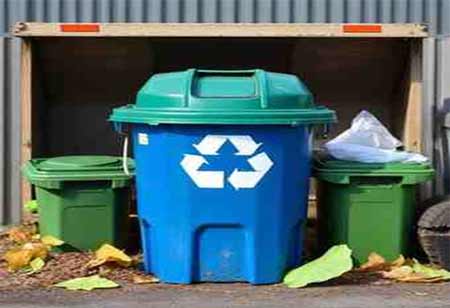Thank you for Subscribing to Environmental Business Review Weekly Brief
The Role of Carbon Capture in a Sustainable Future
As the global community confronts the escalating problem posed by rising carbon emissions, the probe

By
Environmental Business Review | Monday, May 20, 2024
Stay ahead of the industry with exclusive feature stories on the top companies, expert insights and the latest news delivered straight to your inbox. Subscribe today.
Carbon capture is crucial for mitigating climate change by trapping CO2 emissions from industrial processes and power plants, fostering a sustainable future.
FREMONT, CA: As the global community confronts the escalating problem posed by rising carbon emissions, the probe for effective and sustainable solutions has increased. Immediate action is required to address the threat of irreversible damage to the world, increasing global temperatures, and extreme weather occurrences. One of the main strategies in the fight against climate change is developing and deploying carbon capture technology. Carbon capture and storage (CCS) provides hope for lowering greenhouse gas emissions and mitigating the effects of climate change by absorbing and storing carbon emissions from various sources.
After being captured, the CO2 is transported to an appropriate storage area, often underground, where it is kept permanently and cannot be released into the atmosphere. The primary feature of CCS is its efficacy in significantly reducing CO2 emissions, thereby contributing substantially to mitigating the impact of greenhouse gases on climate change. New technologies have emerged from the search for carbon capture methods that are more economical, environmentally friendly, and efficient.
Airborne Recording: Instead of obtaining CO2 from massive industrial sources, direct air capture (DAC) technology seeks to extract CO2 from the atmosphere directly. This technology provides a flexible way to cut carbon emissions in various industries, using specialized filters and chemical processes to remove CO2 from ambient air.
Capturing Carbon in Industrial Processes: CO2 emissions from industrial activities are a major global contributor. Nonetheless, several advanced methods have been developed to directly extract CO2 from these industrial sources before it is discharged into the environment. These technologies provide distinct benefits and customized solutions for various industries, including solvent-based absorption, solid sorbents, and membranes.
Multifaceted Benefits of Carbon Capture and Storage Technology in Climate Action
Significant Reduction in Greenhouse Gas Emissions: CCS technology can significantly reduce greenhouse gas emissions by absorbing CO2 emissions before they are discharged into the environment.
Sustainability for Heavy Industries: CCS offers a workable way to cut emissions from heavy industries, which are crucial for economic expansion.
Increasing Energy Security: CCS provides a means to use fossil fuels more responsibly while reducing their environmental impact. It does this by absorbing CO2 emissions from fossil fuel-based power plants.
Promoting the Transition to Renewable Energy: CCS can facilitate a more seamless shift to renewable energy sources by acting as a dependable backup for sporadic renewable energy.
Encouraging Technological Innovation: Research and innovation in sustainable energy solutions are stimulated by the development and application of CCS technology.
For these technologies to reach their full potential, governments, businesses, and individuals must collaborate to adopt and invest in them. CCS can reshape carbon emission reduction through innovative developments in direct air capture and industrial process solutions. The potential of these advancements paves the way to a cleaner, greener future by supporting and investing in these technologies.
More in News





